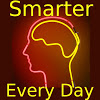
SOLAR ECLIPSE
Notice from the clock on the animation that it will take less than two hours for the dark shadow to traverse the continent.
Virtual Viewing Party
North American Division of SDAs Department of Education

Map of Participating Schools
Ideas for Experiments
If you have ideas for experiments that would be easy to perform and fun to share, send a link to chansen@southern.edu, and it might be added to the list below.
- Observation details: First record the location (latitude, longitude, elevation). Then record the following physical data:
- Monitor the outdoor air temperature at multiple times before, during, and after the eclipse.
- Record time of contact point 1 (C1) - lunar disk first touches the solar disk (sun is still completely visible)
- Record time of contact point 2 (C2) - lunar disk first covers the sun (sun first completely hidden)
- Record time of contact point 3 (C3) - solar disk first shows after totality
- Record time of contact point 4 (C4) - edge of lunar disk leaves edge of solar disk
- Photographic record: There are several interesting things to record as still photographs or as video. Just before C2 and just after C3, photograph the "diamond ring" and "Bailey's Beads." A visual record of "shadow bands" would be quite interesting as well. This link describes some experimental apparatus to help you view them. These phenomena are discussed in the Smarter Every Day video linked to above.
- Spectral comparison: Use a spectrometer to record the spectrum of the corona of the sun during totality and compare to the spectrum of the full sun. Here is an open source spectrometer kit that we use in some of our labs.
Helpful Books
Eclipse Information Resources
NASA's solar eclipse
 |
NASA's solar eclipse website has a host of information about the eclipse, from solar eclipse basics and tracking maps to information on contributing to scientific investigations during this eclipse.
|
Great American Eclipse
 |
GreatAmericanEclipse.com is another good website for information and detailed maps of the path of the eclipse. |
Animated flyover of the predicted path of the eclipse shadow
|
Animated flyover of the predicted path of the eclipse shadow, from Oregon to South Carolina. |
Smarter Everyday
 |
Here is a very nice video explaining how lunar and solar eclipses are formed. |
 |
Smarter Every Day on You Tube - Episode 171 . Destin talks about interesting things to look for when watching an eclipse, as well as a technique for photographing it. |
| A great source for genuine viewing glasses! |